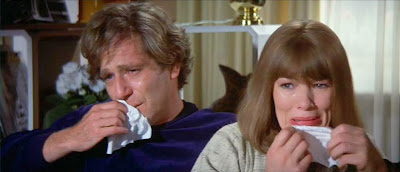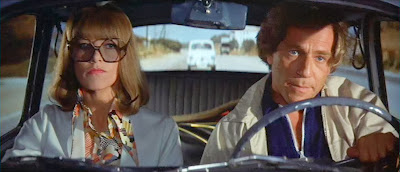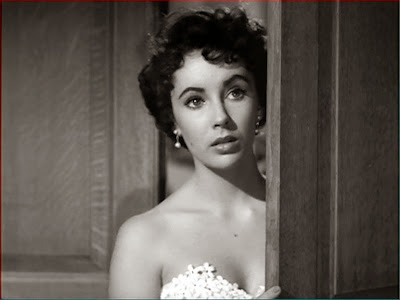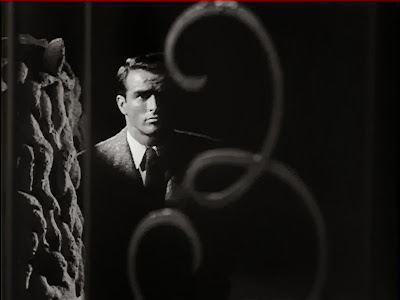This camp-tastic treasure from my culturally misspent youth is high on retro '70s fashions, bitchy dialogue, and TV-movie grade thrills.
Imagine, if you will, Mary McCarthy’s sorority sister soaper The Group, crossed with Friday the 13th, add a bit of Charlie's Angels glamour (Aaron Spelling is also this film's producer), and toss a 1960s Ross Hunter "women in peril" melodrama into the mix, and you've got a pretty good idea of what’s in store for you with Five Desperate Women (who can resist that title?). A minor entry in the beloved ABC Movie of the Week anthology series of made-for-TV movies that proliferated during the 1970s. The series produced a slew of amazingly durable motion pictures over the course of its seven years on the air, among them: Trilogy of Terror, Duel, Don’t Be Afraid of the Dark, So Awful About Allan, Bad Ronald, and Reflections of Murder.These 90-minute movies, especially the thrillers, were ALWAYS the talk of my junior-high schoolyard the following day, and I recall, at age 13, Five Desperate Women being a particular favorite – its high regard aided considerably by our being too young and lacking in life experience to take much notice of the film’s timeworn clichés and obvious plotting.
 |
| Joan Hackett as Dorian |
 |
| Julie Sommars as Mary Grace |
 |
| Denise Nicholas as Joy |
 |
| Stefanie Powers as Gloria |
 |
| Anjanette Comer as Lucy |
A weekend of rest, relaxation, and rehashing the past is on the agenda for the five diverse and high-strung women, whose only other companions on the island resort are the creepily geeky charter boat captain (Bradford Dillman), and the all-business, cloyingly sincere caretaker (Robert Conrad). Oh yes, and a homicidal maniac has recently escaped from a nearby mental institution—all secluded areas have nearby mental institutions—and is stalking the grounds.
Thus, the mystery is set. Or at least one of them. The biggest one being how these five women ever became friends in the first place. Once everybody starts airing their dirty laundry and copping to the fact that none of their lives has turned out the way they had planned, the women waste little time in spending the bulk of their reunion time bitchily sniping at each other. A condition only exacerbated by frayed nerves and zero survival skills once the presence (not the identity) of the killer becomes known and the women have to learn to rely upon one another.
 |
| "Special Guest Star" Robert Conrad as Michael Wylie |
 |
| Bradford Dillman as Jim Meeker |
Viewed today, Five Desperate Women incites so many giggles at its own expense that it challenges one to imagine how it was ever conceived as a serious thriller, but I must say, as an adolescent I found this movie to be VERY gripping and terrifically suspenseful. So much for the discerning tastes of youth.
The unintentional laughs start early with a scene in which put-upon rich girl Mary Grace is emotionally battered by the passive-aggressive ventriloquist act engaged in by her silent mother and loudmouthed nurse. Hot on the heels of this comes the dockside reunion of the giggly sorority sisters wherein they sing a school song and southern-fried sot Lucy, drops racist hints about affirmative-action charity case Joy, not really being “One of us….”
Once the women are ensconced on the island and the outbreaks of temperament erupt as regularly and abruptly as the outbreaks of violence, Five Desperate Women - clocking in at a brisk 75 minutes - moves along so quickly one scarcely minds the minimal drama and by-the-numbers thriller plotting. What does catch the attention is the risible dialogue (statement:“I buried the dog." Response: “[cheerily] Thank you!”); not-so-surprising personal revelations; and a screenplay (written by three men) which can’t think of a way to build tension without having five fully grown, college-educated women carry on like sheltered adolescents at a summer camp.
Perpetually helpless, scared, and often absurdly overdressed (for her "escape" Denise Nicholas' character chooses an ensemble that features a cloche hat, midi vest jacket, hoop earrings big enough to throw a grapefruit through, and knee-high boots), these women quiver and quake while waiting to be victimized. They do traditional horror movie "girly" things like trip over brambles while running for their lives, demonstrating remarkably bad aim while throwing objects to ward of an assailant, and wandering off to dark places alone. They all but run around in circles, shrieking and flapping their arms. Being terrified is one thing, but these women - surrounded by fireplace pokers and butcher knives – never once resort to grabbing some common household item for self-defense (OK, at one point one of them grabs a shoe...but you see what I mean).
 |
| Posing for a fashion shoot? No, in this shot Denise Nicholas and Stefanie Powers are reacting to a grisly murder |
If what I've written thus far has given the impression that Five Desperate Women is a film to be avoided, let me correct that error now. With apologies to TCM, Five Desperate Women is one of The Essentials: one of those rare, miraculous little films that exists simultaneously within the realm of good and bad. A film that pays countless entertainment dividends whether taken seriously (for all it's faults, it's actually better than most of what is being released in the horror/suspense genre these days) or viewed as retro camp.
WHAT I LOVE ABOUT THIS FILM
As stated before, Five Desperate Women is basically your average woman-in-peril suspense thriller - only taken to the fifth power. There’s literally nothing here you haven’t seen a dozen times before in movies about a mad killer on the loose in an isolated setting, the only difference: instead of one hysterical would-be victim, you have five. One might imagine this would lead to five times the suspense, but mostly it just translates to five times the screaming hysterics. Which is fine by me.
 |
| I'm not exactly feelin' it from Ms. Powers in this shot |
PERFORMANCES
The late Joan Hackett as the forlorn Dorian is my absolute favorite in the film, but if, like me, you're already a fan of her work, you'll note unfortunate echoes of similar roles she played in The Last of Shelia, The Group, Reflections of Murder, and another college reunion TV movie, Class of '63. It's not that Hackett isn't excellent, no, she always is; it's just that she was horribly typecast throughout most of her career and directors rarely could see her as anything but the mousy, retiring victim. She was Oscar-nominated and won a Golden Globe for one of my least favorite of her performances, the vainglorious socialite friend of Marsha Mason in Only When I Laugh (1981), but at least she was cast against type. Her rarely exploited gift for physical comedy can be seen to delightful effect in 1969's Support Your Local Sheriff , a film for which I really think she deserved a nomination.
What really saves Five Desperate Women from complete TV-movie mediocrity is the masterstroke casting of two of the most splendidly idiosyncratic actresses of the '70s together in the same film. Joan Hackett is sensational, but Anjanette Comer (so great in The Loved One and The Appaloosa) almost steals the film as the skittish southern belle Lucy.
THE STUFF OF FANTASY
Five Desperate Women is a video catalog of all things '70s. You won't care a whit who the mad killer is because your eyes will be popping out of your head from the fashion parade of mod MOD MOD fashions and positively enormous hairdos. You'll see minis, midis, maxis, hot pants, knickers, boots, huge studded belts, chokers, fringe, and halter tops. And lest we forget the boys, we have Robert Conrad traipsing about in his by-now-trademark ridiculously tight, bun-hugging pants and overstretched, pec-tacular T-shirts.
 |
| Smokin' & Drinkin' and Everything but Thinkin' One of the retro pleasures of this film is witnessing how much carefree smoking and drinking goes on |
THE STUFF OF DREAMS
Two favorite films from my youth that are infinitely better than Five Desperate Women but nevertheless always remind me of this TV movie are: Five Gates to Hell (1959), a war film about of a group of army nurses having to fend off a hoard of Indochinese guerrillas; and John Ford's last film Seven Women (1966), about the female residents of a Chinese mission facing off Mongol bandits (featuring a kick-ass performance by Anne Bancroft). Although these "women banding together" movies never developed into an actual action film sub-genre, they are both notable and enjoyable for providing narratives in which women not only propel the plot, but play characters whose actions are instrumental to their own survival.
Male-centric war movies and westerns always tend to bore me because of their reliance on archetypal macho posturing and one-note, stiff-jawed heroics. The need for male characters to always depict strength and assurance so as to perpetuate society's narrow definition of masculinity has resulted in one woefully monotonous, action-oriented thriller after another. Conversely, female characters are allowed (sometimes to a fault, as this film demonstrates) the dimensionality of being able to display the gamut of human emotions, from weakness to bravery, in the carrying out of heroic acts...something I always find more engrossing than stoic fearlessness in the face of all.
Five Desperate Women goes overboard in having the women characters evince too much in the way of unfettered emotionalism (something I again must lay at the feet of the male screenwriters) , but at least it's a film in which the women eventually have to fend for themselves and are responsible for their own rescue. It looks awfully silly now, but back in 1971, the same year Helen Reddy's I Am Woman first came on the scene, Five Desperate Women (to a 13-year-old who hadn't yet discovered the self-sufficient tough cookies of '40s film noir) looked very much like a women's lib twist on the traditional suspense thriller.
























.JPG)



























